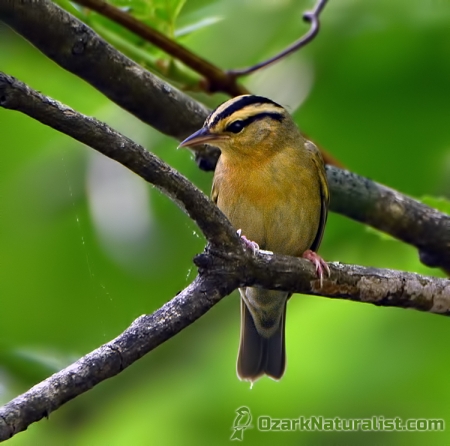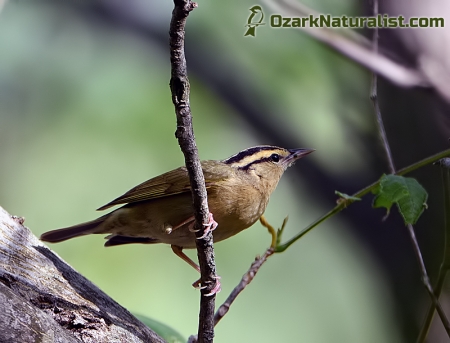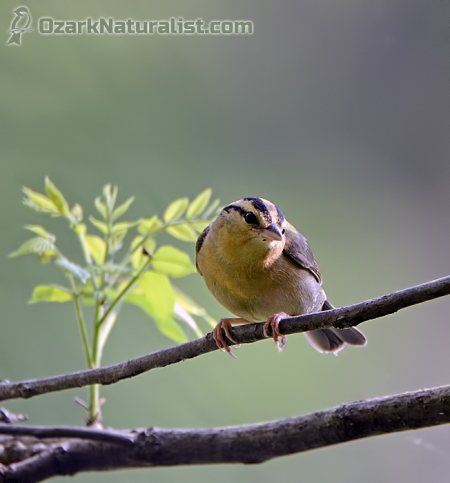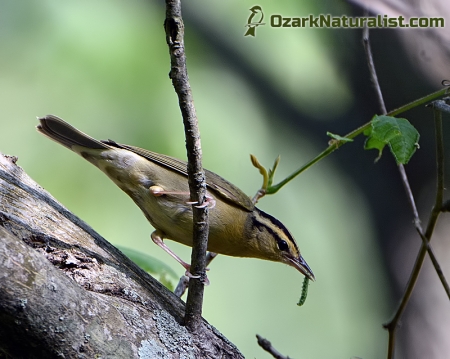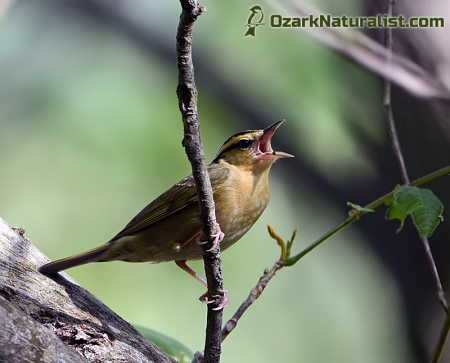We arrived early at Buck Hollow on the Jacks Fork, too early really. The river valley is so steep and narrow that it takes a while for the morning sunshine to really make its way into play. We parked at the restrooms and walked down the road towards the canoe landing. The birds, of course, were already singing—a Robin back towards the bridge, an Ovenbird on the hill behind the restrooms, an Indigo Bunting on the gravel bar across the river and a Great Crested Flycatcher “fweeping” as he moved about the canopy.
It was my birthday and Dayna and I were at the first of several planned stops for the day. Our goal here was a Worm-eating Warbler. I had been unable to find one the past couple of summers, but not long ago, I stumbled across the results of a canoe survey of singing birds along the Current and Jacks Fork Rivers. The surprising thing about this survey was the very high numbers of Worm-eating Warblers on the upper Jacks, with the number of birds per mile being several times what they were over the rest of the area surveyed. I suppose this shouldn’t be so surprising since the species’ preferred habitat is steep, wooded slopes with dense understory and the upper Jacks Fork certainly provides this in abundance.
We started with Buck Hollow simply because it’s very easy to access, being right off Highway 17 just north of Mountain View. If we didn’t find our birds here, we would move on to Blue Spring, Bachers and even Rymers if necessary. It wasn’t.
About halfway to the canoe landing, I heard the dry, buzzing trill of a Worm-eater coming from the hill to the south. It didn’t take long to pinpoint his location.
He wasn’t wary at all and we spent the next twenty minutes following him around, shooting photos as he searched for insects, pausing frequently to sing.
Unlike many (most?) warbler species, Worm-eaters don’t hang out in the canopy, instead spending their time down in the understory and even on the ground. This makes them much easier to photograph and it’s a lot easier on the neck, too.
And they do eat worms, if you use the liberal meaning of the word to include caterpillars and not just earthworms.
Looks pretty proud of himself, don’t ya think?.
I can’t find a definitive record of a Worm-eating Warbler actually eating an earthworm, though I image they would eat them, given the opportunity. Still, I have to agree with Arthur Cleveland Bent who suggested in Life Histories of North American Wood Warblers that a more apt name would be “Hillside Warbler.”
Hillside Warbler would not be a bad name for this bird, which shows a decided preference for wooded hillsides covered with medium-sized deciduous trees and an undergrowth of saplings and small shrubbery.
The first stop of the day was a major success and it was time to move on to our next stop, Cover Prairie Conservation Area near Koshkonong. But that’s another post…

